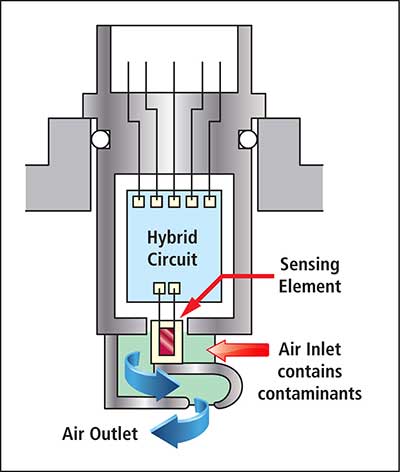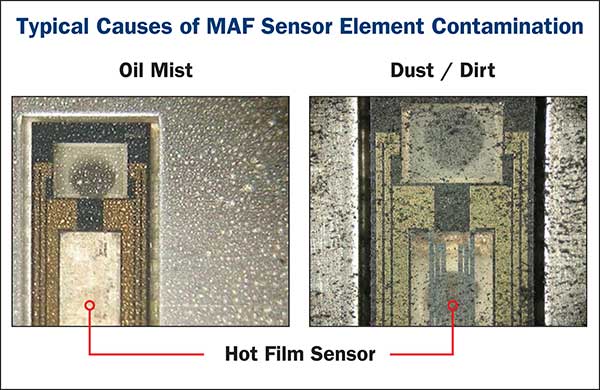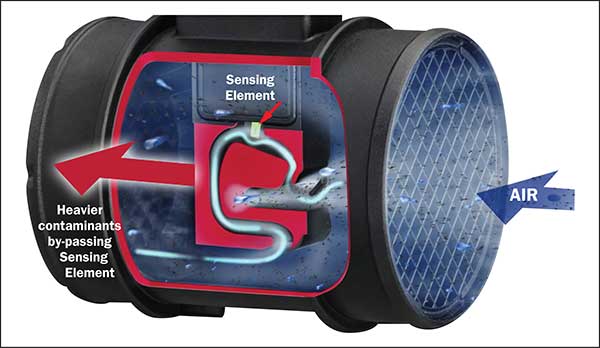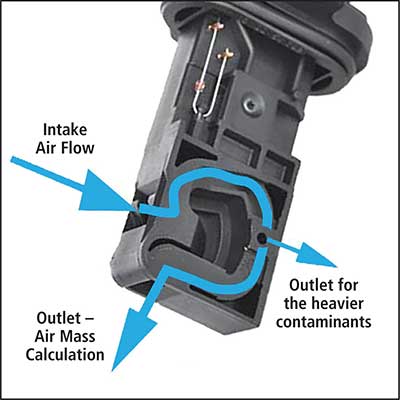Mass Air Flow Sensors - Hot Film
What technicians need to know about the design changes in the current Hot Film type MAF sensors to assist them in the servicing, on vehicle diagnosis and testing, to ensure correct Air/Fuel mixtures are maintained through all driving conditions.
Generally, one of the major causes of MAF premature failure on the earlier design MAF systems, was the airborne contaminants (from entering airflow to the intake manifold) passing across the heated sensing element during engine running conditions as well as the residual hot engine oil fumes (remaining and moving around in the intake manifold) and left over EGR residue after the engine has been switched off.
Typical design that may require regular de contaminating. (cleaning element).

These contaminants (over time) accumulate on the sensing element surface and eventually reduce the MAF efficiency in the task of accurately determining the intake air mass. This condition generally leads to overall leaner mixtures, resulting in possible poor idling, reduced engine performance and higher emissions output.
Typical causes of MAF sensor element contamination.

How can technicians minimise the contamination of the MAF?
Ensuring only quality air filters are utilised on the vehicle is a great start in ensuring the Intake air contamination is minimised. This of cause does not greatly reduce the internal oil fume contamination that affects the sensing element. Suitable solvents are available to assist in the attempt to remove the contaminants (clean the sensor element surface) so as the MAF sensor efficiency can improve.
This may or may not be successful as the contaminants over time and due to heat of the sensing element may not be able to be removed. Renewing the MAF is the only option when this is the case.
Improved design MAF to reduce contamination affect.
Reducing the airborne contaminants that accumulate on the sensing element required design changes to the MAF air sampling procedure. Typically, from the Bosch “HFM-6” MAF units, the air sample across the sensing element has been reduced as well as design changes allowing the heavier contaminant particles to be directed away and by-passing the sensing element.

This allows for a less contaminated air sample to be utilised for air mass calculation and increased service life for the MAF sensor.

The re-designed MAF housing for air intake and air outlet also minimises the effect on the sensing element from airborne contaminants and residual engine oil fumes.

Servicing the MAF.
The design modifications to the later MAF units do not eliminate the need for regular scheduled MAF servicing. The technician is still required to carry out thorough inspections and any cleaning necessary with suitable products especially if the vehicle is driven in harsh environmental conditions or if the engine is consuming excess engine oil.

